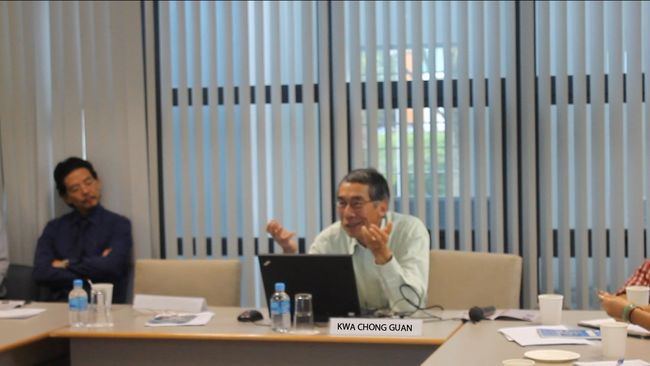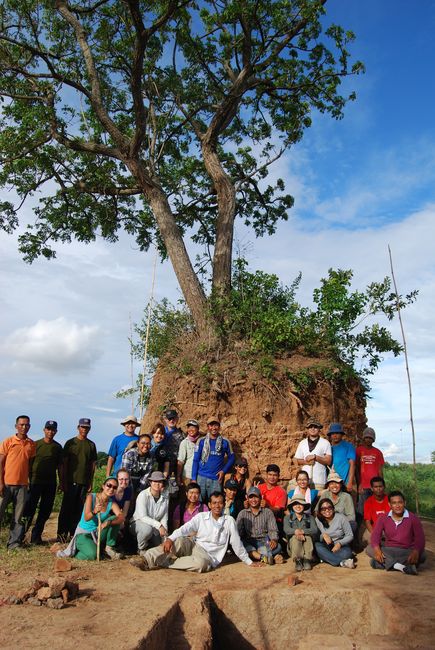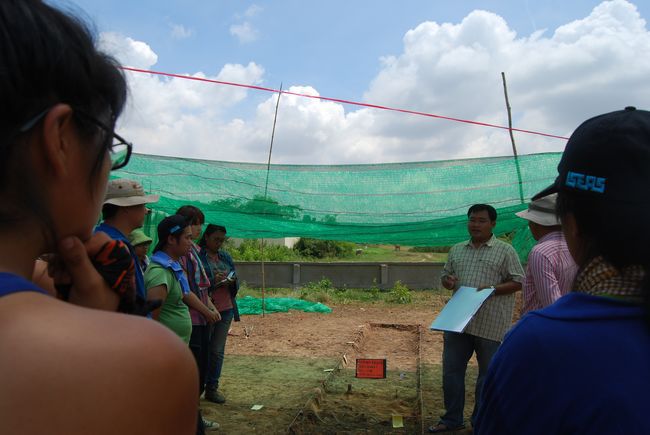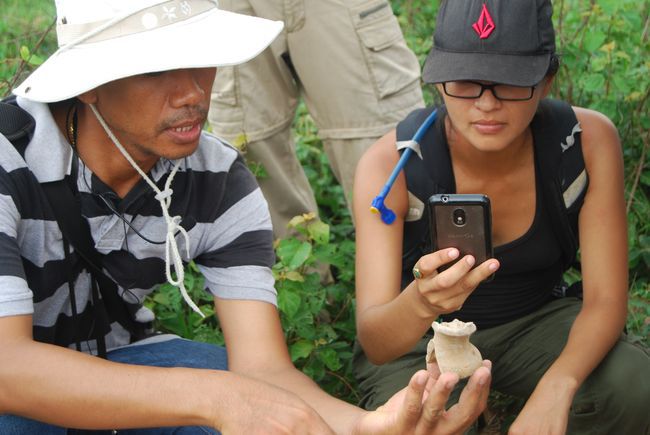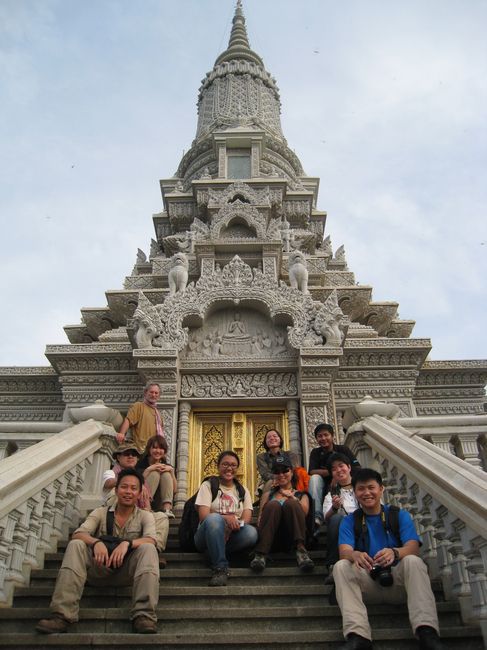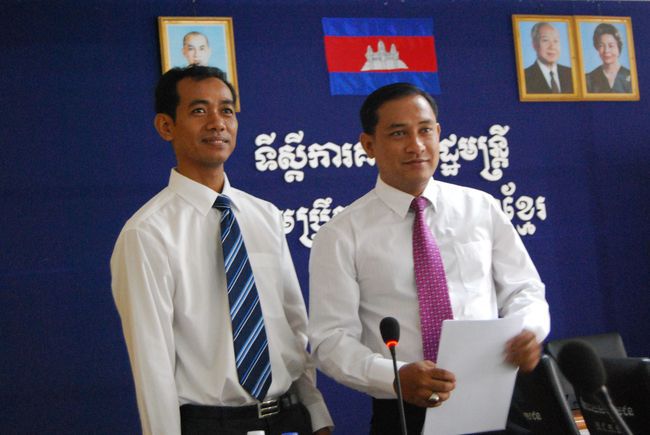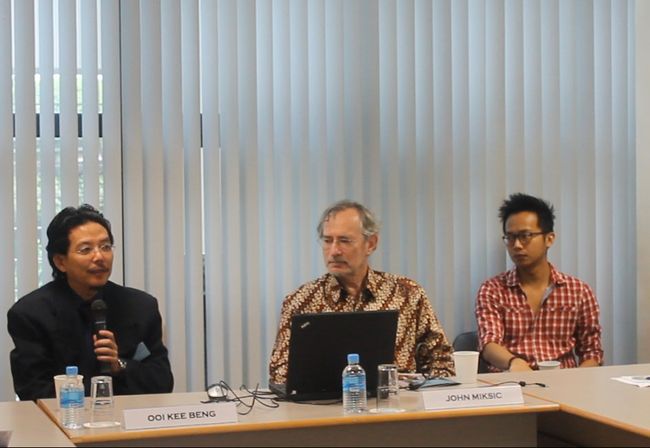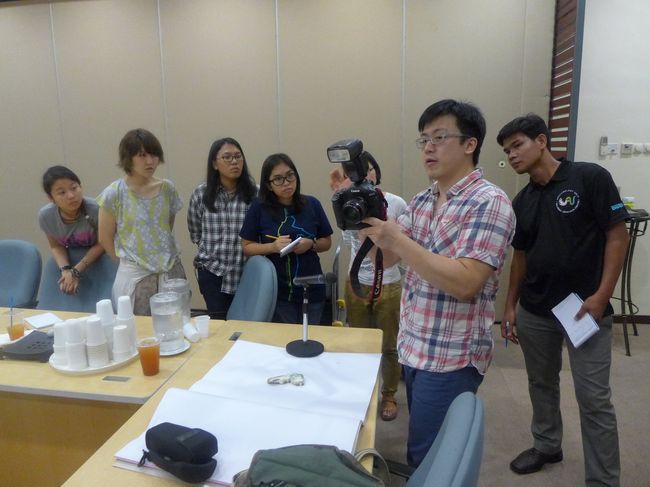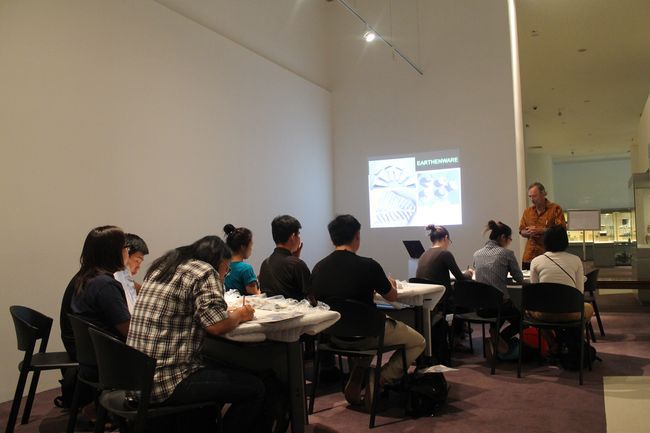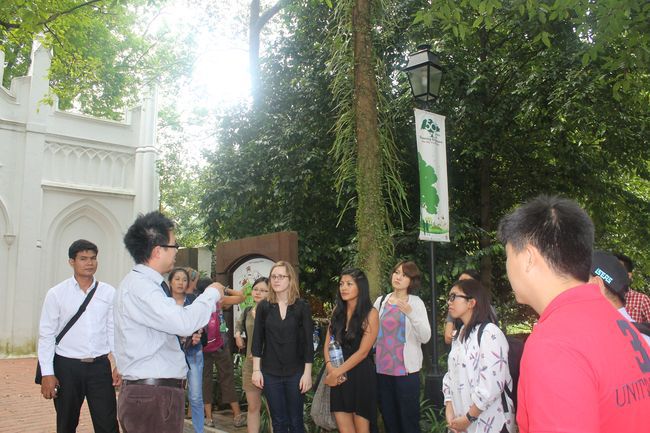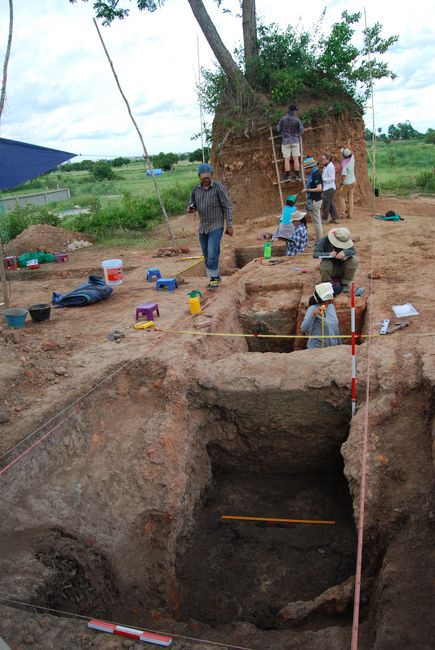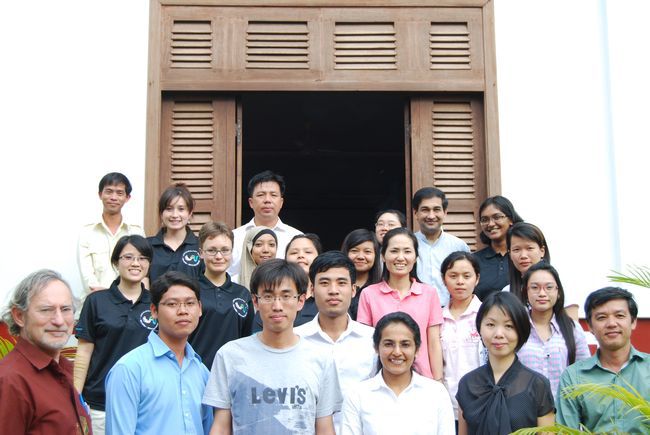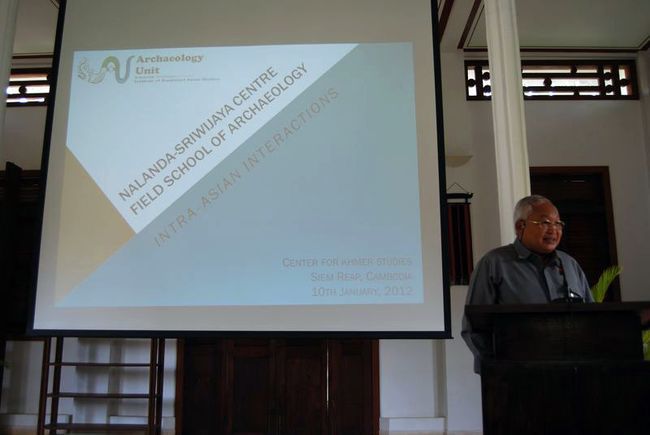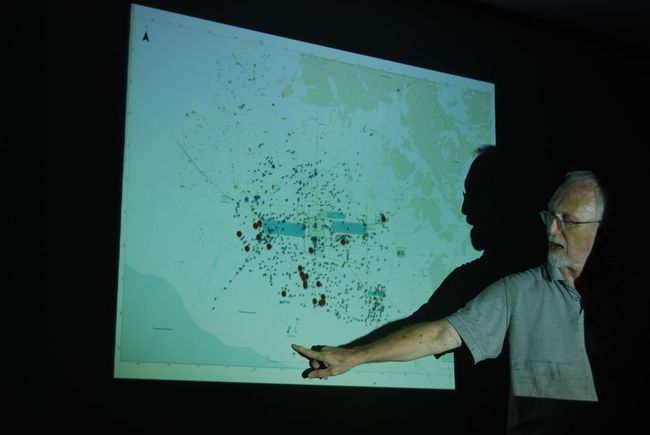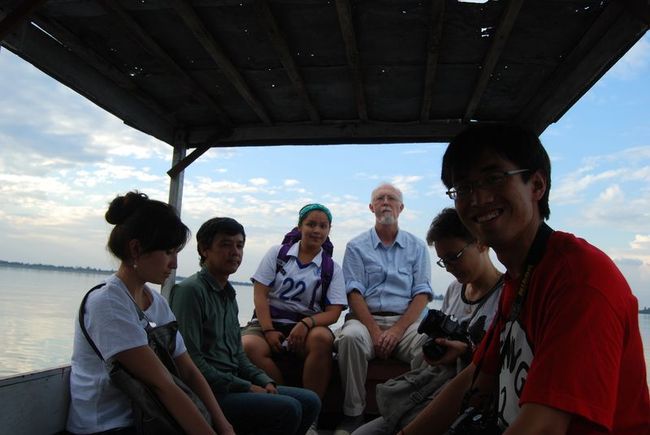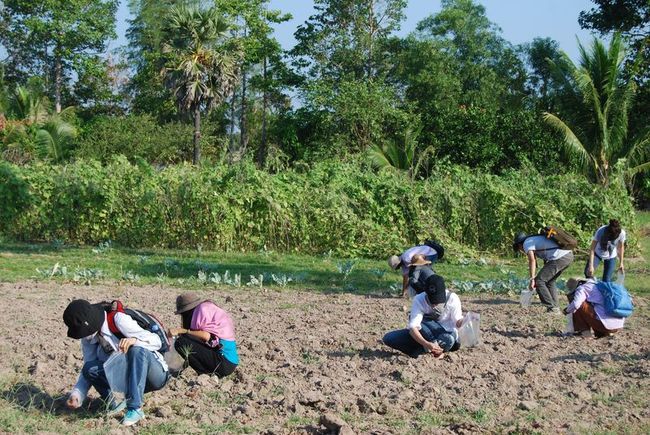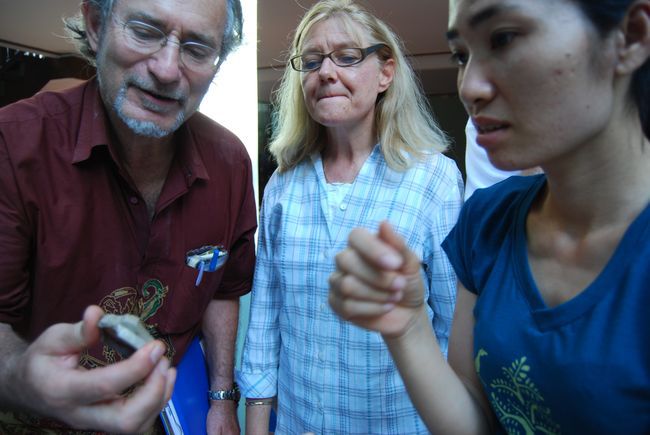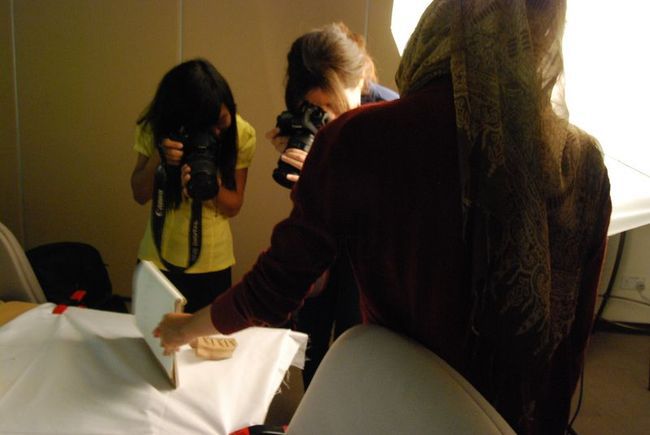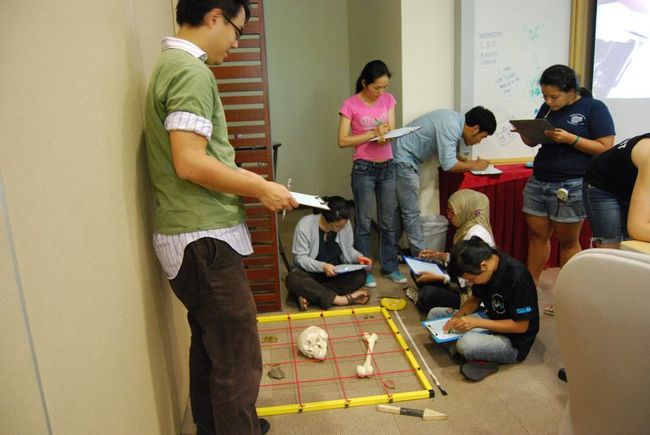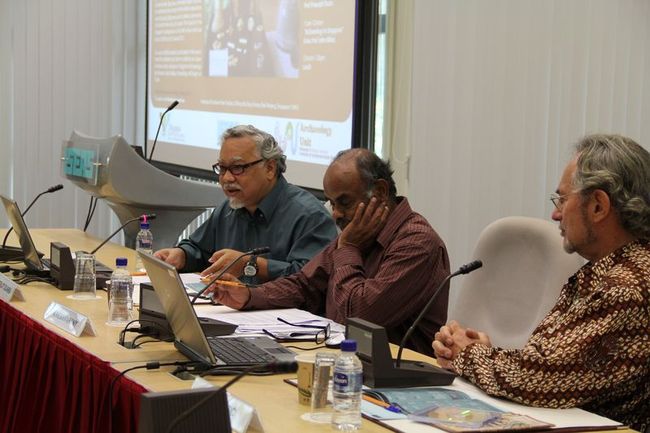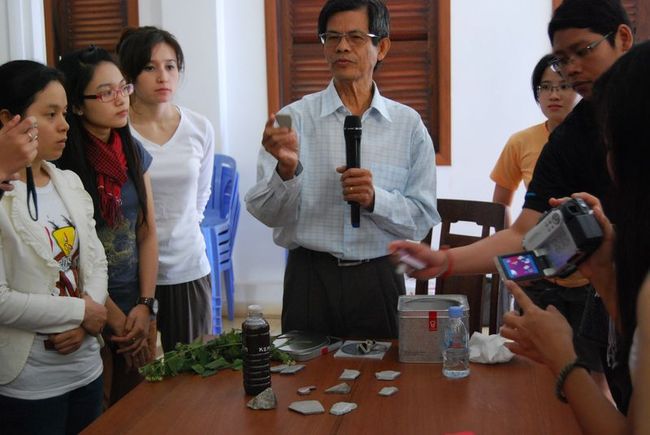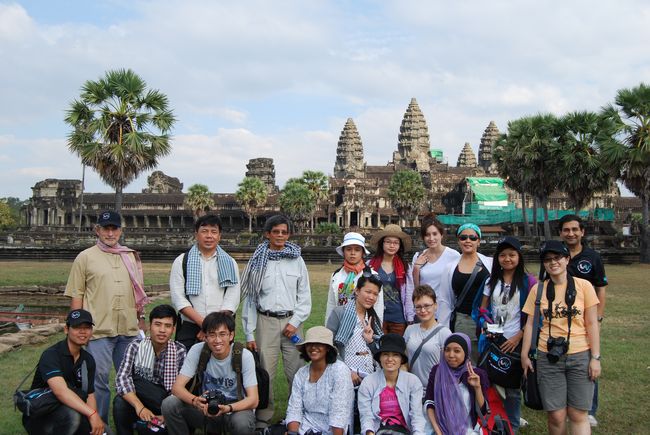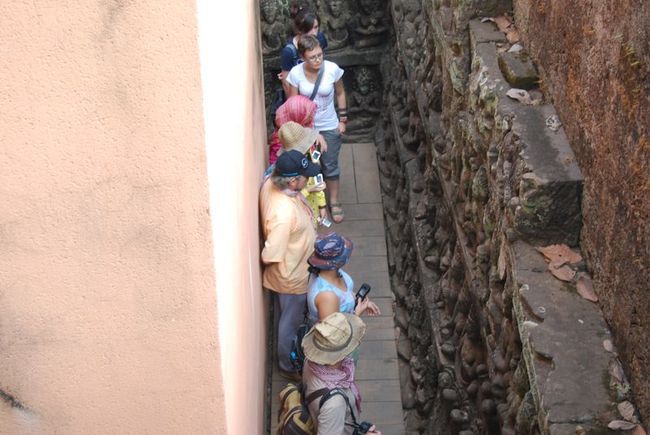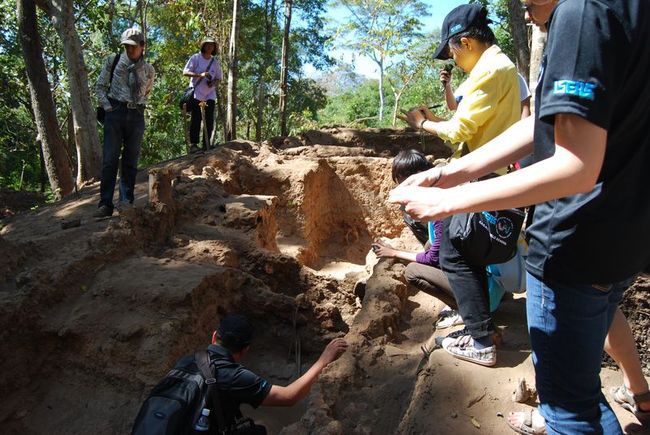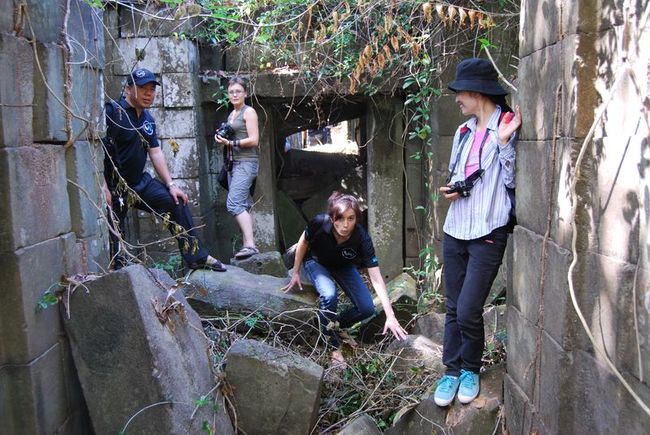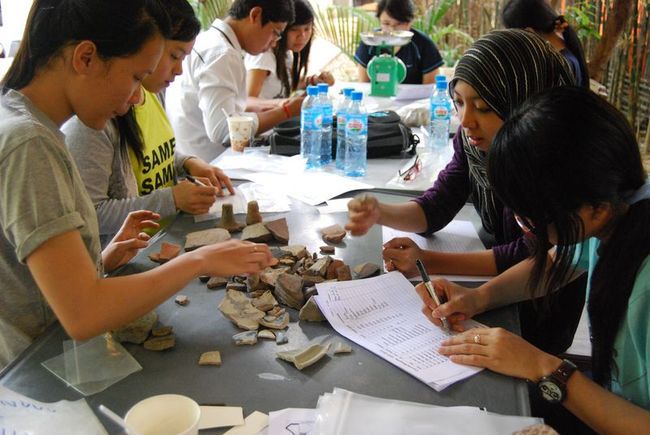NSC Field School in Trawas, East Java
July – August 2018
The 2018 Archaeology and Art History Field School took place between 22 July and 11 August 2018. The Indonesian leg was held in Trawas, East Java (22 July – 7 August) followed by the Singapore leg from 7 – 11 August. The archaeological excavation conducted was the first ever to be undertaken on Mount Penanggungan, considered a sacred mountain site with human activities and rituals dating back to the Majapahit era.
Local partners included Indonesian National Centre for Archaeological Research (PUSLIT ARKENAS), University of Surabaya (UBAYA), and Ubaya Penanggungan Centre (UPC). The 16 student participants were from the East Asia Summit countries including Indonesia, Singapore, China, America, New Zealand, Myanmar, Cambodia, Malaysia, Vietnam, and India.
The art history component covered the material culture and artistic productions of the East Javanese period (10th-15th century). Field trips were made to ancient monuments, and museums with lectures conducted in situ. Lectures by international experts exposed students to art history methodologies and theoretical frameworks.
Led by a team of Singapore, and Indonesian archaeologists, the archaeological training component focused on field training such as excavation methods and documentation, site survey, mapping, photography, and illustrative documentation of artefacts and wall profiles. Regular tutorials on research design allowed them to be fully involved in the research process underlying the excavation.
The Mount Penanggungan excavation unearthed significant artefacts that helped underline the importance of the site and identify the presence of human occupation during the Majapahit period, thus confirming our initial hypothesis of the area. During the Singapore leg, the students worked in teams to present on several research topics related to the excavation site. This was a culmination of their field experience, and research design tutorials.
2018 NSC Field School Administrative History
2018 NSC Field School Booklet (pdf, 4.5mb)
2018 NSC Field School Announcement E-flyer (.pdf, 3.48mb)
2018 NSC Field School Application Form (.doc, 242kb)
2018 NSC Field School Frequently Asked Questions (.pdf, 375kb)
July – August 2017
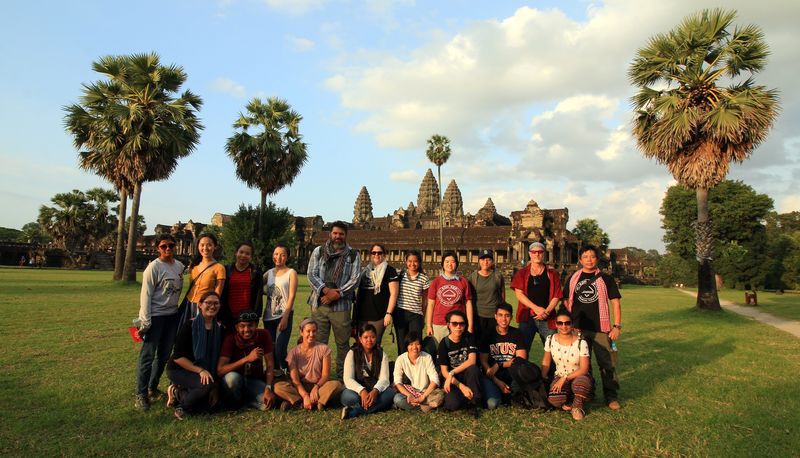
The 2017 field school cohort at Angkor Wat. (Credit: Dr. Ea Darith).
The Archaeology Unit (AU) at ISEAS – Yusof Ishak Institute (ISEAS) in collaboration with Cambodia’s APSARA Authority conducted an archaeological Field School from 28 July – 16 August at the Tonle Snguot site, located near famed Angkor Thom complex near Siem Reap, Cambodia. This session was the fifth Field School conducted by NSC in Cambodia. The Tonle Snguot site is one of close to 100 late Angkorian public hospital complexes that were commissioned under the reign of Mahayana Buddhist King, Jayavarman VII (1181-1218 CE). Major discoveries included a 2.0 metre Dvarapala statue (guardian); a Bhaisjyaguru statue (Medicine/Healing Buddha), a Surya- or Candra-Vairocana statue (Sun or Moon Boddhisattva), and a rich archaeological assemblage dominated by 12th-14th century ceramics.
There were a total of 14 students who participated in the Field School from a variety of East Asian Summit (EAS) countries including Australia; Cambodia; China; India; Indonesia; the Philippines; Thailand; Vietnam; and the United States of America.
The itinerary featured interactive site visits and informal site lectures. Hands-on training sessions took participants and staff through 2000 years of complex socio-political and economic evolution. Topics also included urbanisation, exchange dynamics, cultural influence, and multi-directional agency among pan-Asian networks. The pivotal points of analytical foci and departure spanned the famed Khmer polities of Funan (1st-6th centuries CE), Chenla (7th-8th centuries CE), and Angkor (9th-14th centuries CE).
The main event included the coordinated archaeological and anthropological operations at Tonle Snguot site, a 12th/13th century hospital / chapel complex associated with Jayavarman VII. Efforts will build upon previous studies of similar sties and general themes of urbanism, industries (such as the medical industry), settlement, and specialized site activities. The final Field School leg in Singapore provided an important comparative component, added training opportunities, facilitated library access and allowed participants to finalise and present team projects. Forthcoming results will provide valuable contributions to science, archaeology and history.
Dr. D. Kyle Latinis (Field School Director) and Dr. Ea Darith (Field School Co-Director; APSARA Authority) designed and implemented the project with funding provided by the Ministry of Foreign Affairs, Singapore as part of an EAS initiative. Primary institutions included ISEAS and APSARA Authority. Supporting partners included the Ministry of Culture and Fine Arts, Cambodia; the Royal University of Fine Arts, Cambodia; the Hungarian Southeast Asian Research Institute; and an extensive list of other organisations and independent researchers who provided invaluable input, advice, opportunities and field assistance. Equally important, local communities were actively involved in the research and training. Our sincere gratitude is extended to all contributors.
2017 Field School Administrative History
2017 Archaeological Field School Announcement E-flyer (PDF, 490kb)
2017 Archaeological Field School Booklet (PDF, 3.59mb)
2017 Archaeological Field School Application Form (.doc, 213kb)
2017 Archaeological Field School Frequently Asked Questions (PDF, 423kb)
Image Gallery
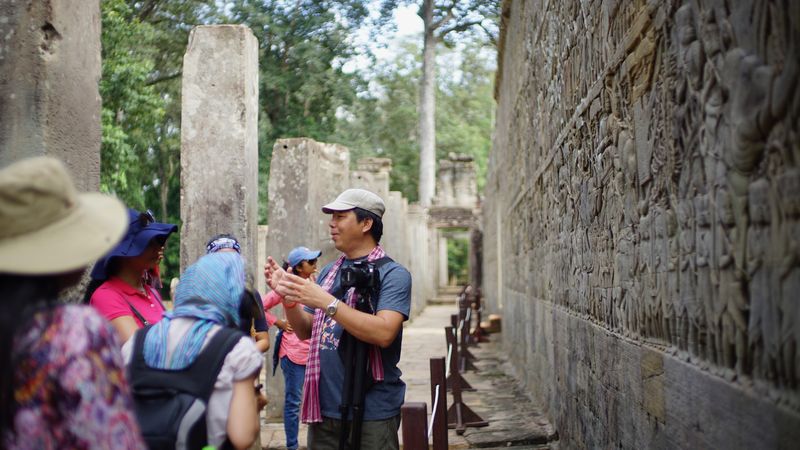
Dr. Ea Darith (Field School Co-Director; APSARA Authority) explaining reliefs at Bayon temple. (Credit: D. Kyle Latinis)
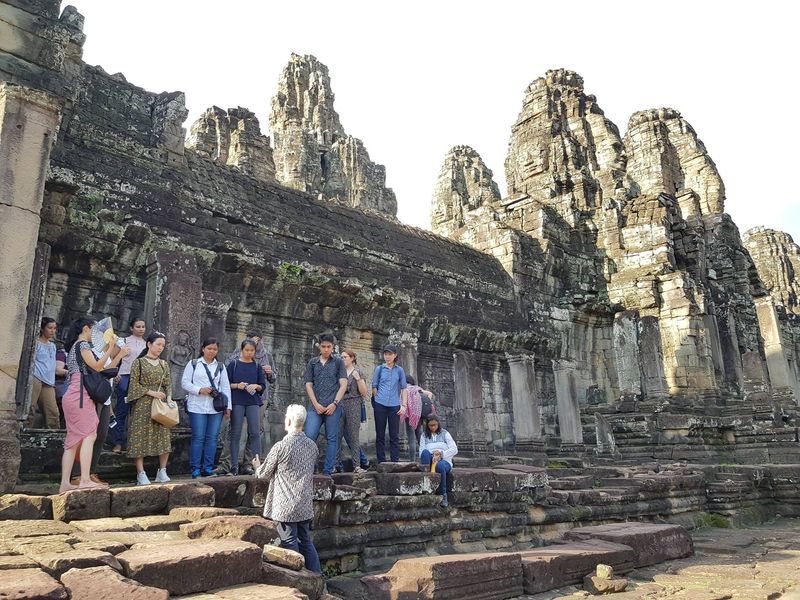
Dr. D. Kyle Latinis (Field School Director; ISEAS – Yusof Ishak Institute) briefed participants on possible ancient hospital structures on reliefs at the Bayon. (Credit: S. T. Foo)
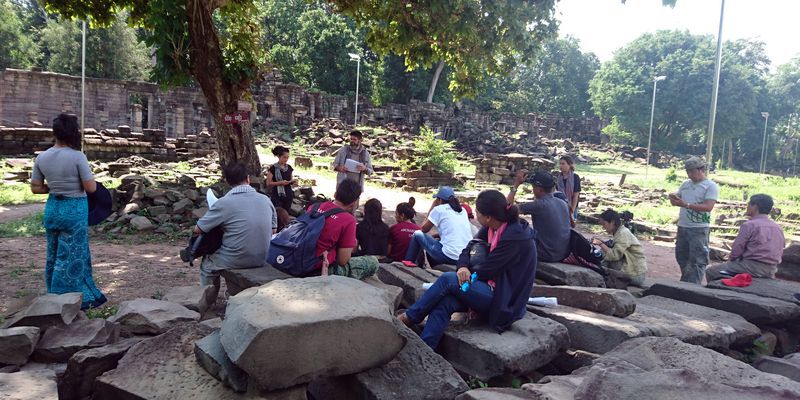
Dr. Hélène Njoto (ISEAS – Yusof Ishak Institute) conducted an art history workshop at Banteay Chhmar with the assistance of Dr. Károly Belényesy (HISTORIARCH – HUNINCO) during a fieldtrip on Angkorian road networks led by Mr. Im Sokrithy (APSARA Authority) and H.E. Dr. Tan Boun Suy (APSARA Authority). (Credit: D. Kyle Latinis)
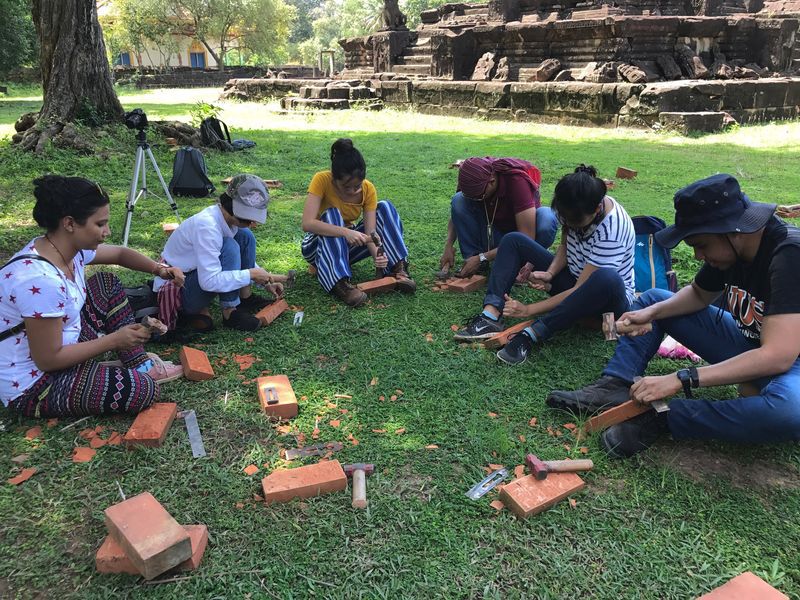
Field school participants took part in a brick temple conservation workshop at Bakong temple by APSARA Authority. (Credit: Chan Wai Peng)
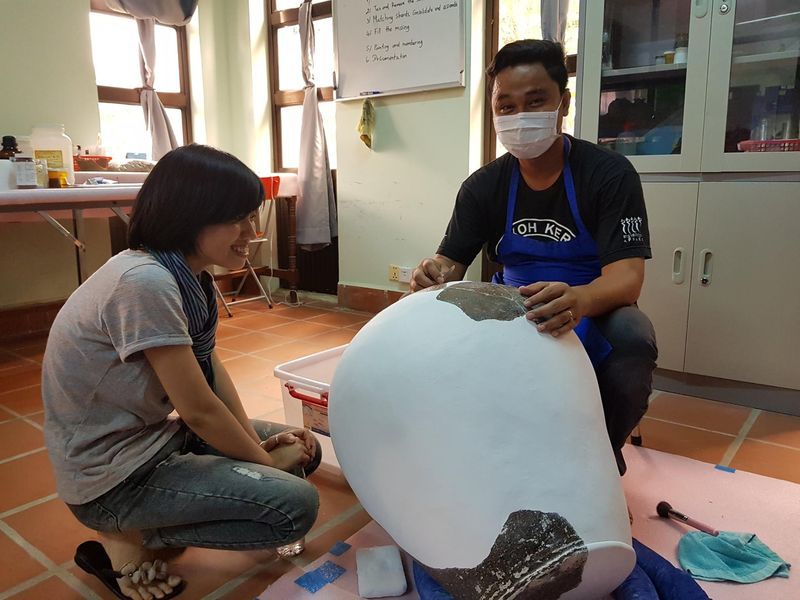
Field school participants learned about ceramic analysis and conservation at APSARA Authority. (Credit: S. T. Foo)
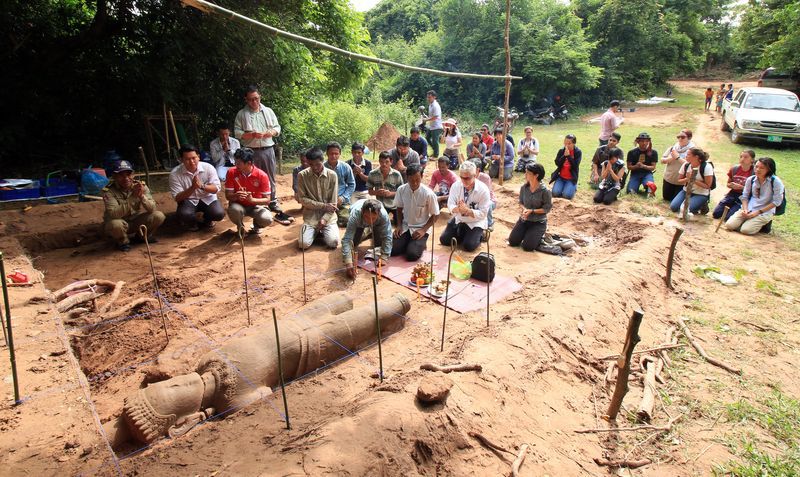
During excavations, a 2.0 metre guardian statue was found (likely in situ). The finds were documented and a small ceremony was conducted in accordance to local customs prior to the removal of the statue for safekeeping by the authorities. (Credit: Dr. Ea Darith)
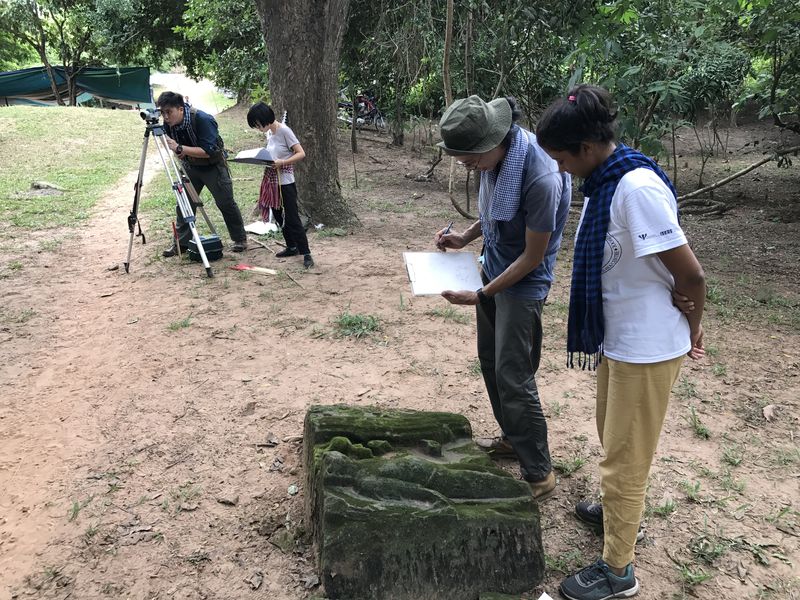
Mr. Michael Ng and Mr. Aaron Kao (ISEAS – Yusof Ishak Institute) conducted survey and drawing training for the field school students. (Credit: Chan Wai Peng)
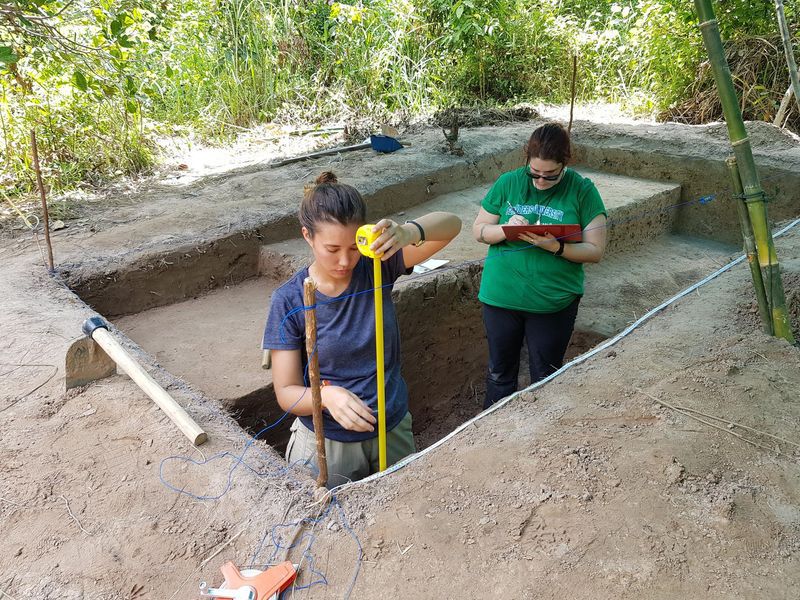
Field participants drawing stratigraphic profiles at Tonle Snguot. (Credit: S. T. Foo)
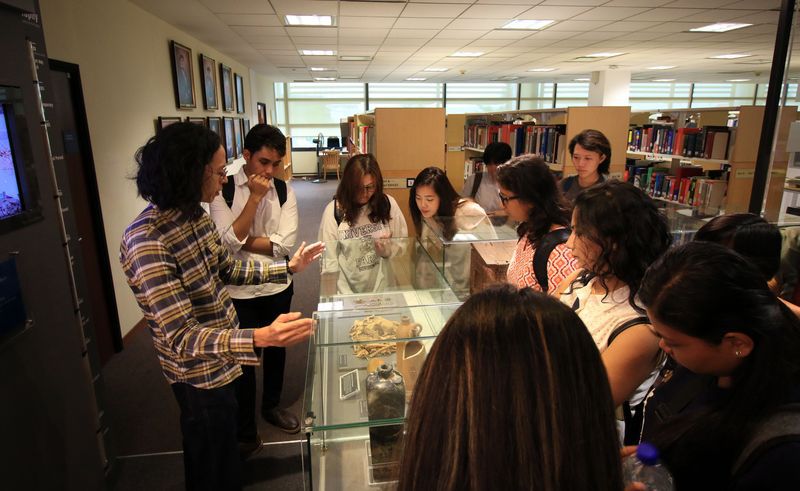
Mr. Aaron Kao (ISEAS – Yusof Ishak Institute) briefed participants on finds displayed in the Archaeology gallery, ISEAS library. The ISEAS library is open to the public and contained finds from excavations in Singapore and from collaborative efforts in Cambodia. (Credit: Ea Darith)
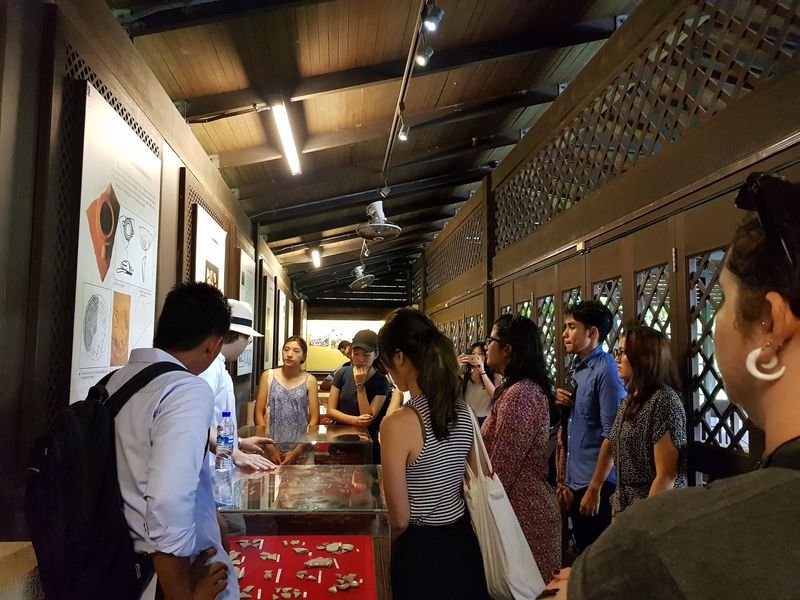
Mr. Lim Chen Sian (ISEAS – Yusof Ishak Institute) briefed participants on the various archaeological finds at Fort Canning. (Credit: S. T. Foo)
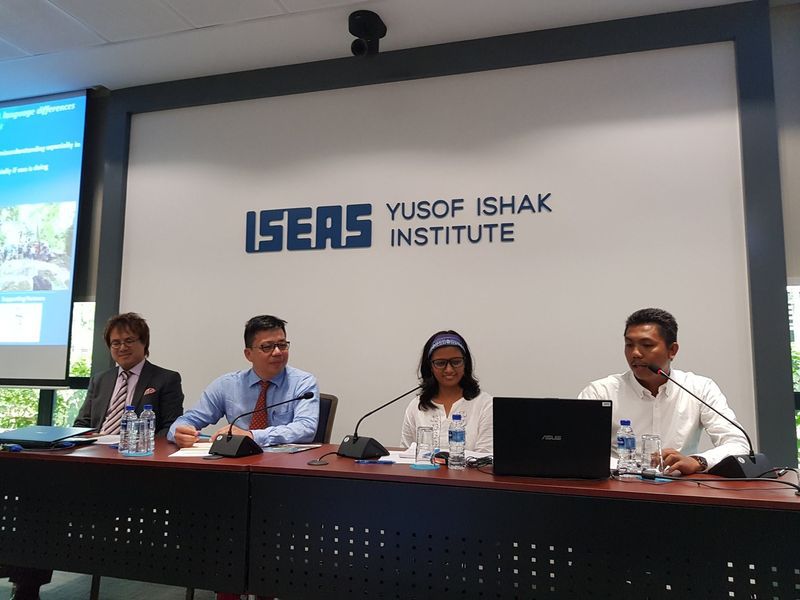
The field school participants gave presentations at the ISEAS – Yusof Ishak Institute, which was moderated by Dr. Ea Darith (Field School Co-Director, APSARA Authority) and Mr. Lim Chen Sian (ISEAS – Yusof Ishak Institute). (Credit: S. T. Foo)
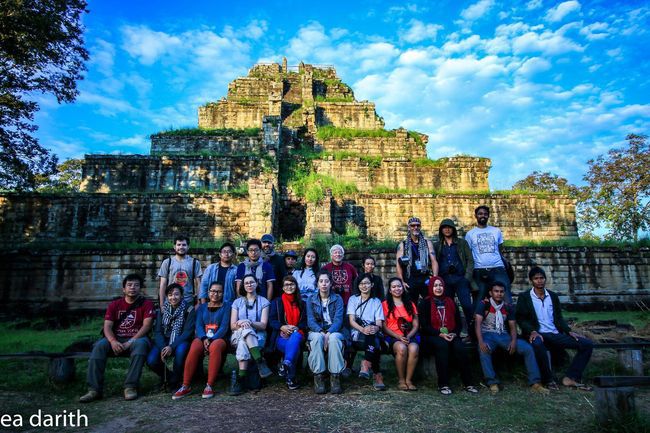
The 2016 Archaeological Field School at Prasat Thom, Koh Ker, Preah Vihear province, Cambodia.
(Credit: Dr. Ea Darith)
There were a total of 16 students who participated in the Field School from a variety of East Asian Summit countries including Australia; Cambodia; China; India; ; Indonesia; Malaysia; New Zealand; the Philippines; Singapore; Thailand; and Vietnam.
The itinerary featured interactive site visits and informal on-site lectures. Hands-on training sessions took participants and staff through 2000 years of complex socio-political and economic evolution. Topics also included urbanisation, exchange dynamics, cultural influence, and multi-directional agency among pan-Asian networks. The pivotal points of analytical foci and departure spanned the famed Khmer polities of Funan (1st-6th centuries CE), Chenla (7th-8th centuries CE), and Angkor (9th-14th centuries CE).
The main event included the coordinated archaeological and anthropological operations at multiple sites within the enigmatic 10th century Angkorian capital city of Koh Ker associated with the reign of Jayavarman IV. The field school was designed to complement ongoing efforts and build on the results of the 2015 field season. Participants lived on-site (in the forest) working with professional staff and local community members. They trained at several excavation locales to cover a diverse range of approaches, techniques and research questions. The results will provide valuable contributions to science, archaeology and history.
The final Field School leg in Singapore provided an important comparative component, added training opportunities, facilitated library access and allowed participants to finalise and present team projects. The Field School was funded by the Ministry of Foreign Affairs, Singapore. Primary institutions included ISEAS, APSARA Authority, and the National Authority for Preah Vihear. Supporting partners included the Ministry of Culture and Fine Arts, Cambodia; the Royal University of Fine Arts, Cambodia; The Royal Academy of Cambodia; the National Museum of Cambodia; the Hungarian Southeast Asian Research Institute; Ecole Française d’Extreme-Orient; and an extensive list of several other organisations and independent researchers who provided invaluable input, advice, opportunities and support.
2016 Field School Administrative History
2016 Archaeological Field School Announcement E-flyer (PDF, 450kb)
2016 Archaeological Field School Booklet (PDF, 2.42MB)
2016 Archaeological Field School Application Form (.doc, 211kb) (due 22 July 2016 +8GMT)
2016 Archaeological Field School Frequently Asked Questions (PDF, 333kb – updated 29 April 2016)
Image Gallery
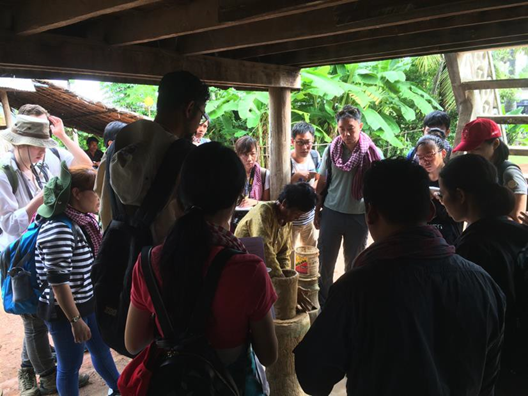
Learning about traditional pottery making at a Kampong Chhnang potting village, led by Mr. Tep Sokha. (Credit: D. Kyle Latinis)
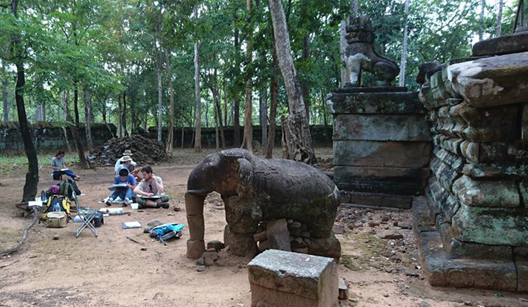
Drawing class at Prasat Damrei led by Aaron Kao (NSC). (Credit: D. Kyle Latinis)
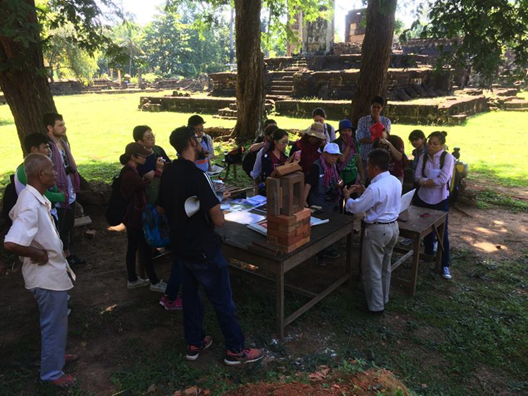
Conservation and restoration workshop with APSARA National Authority at 9th century Bakong Temple – using traditional bricks, mortar, sandstone, and construction technology. (Credit: D. Kyle Latinis)
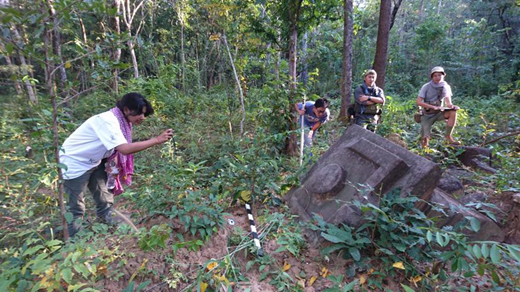
Mapping exercise with Michael Ng and Aaron Kao (NSC) at Prasat Andong Kuk. (Credit: D. Kyle Latinis)
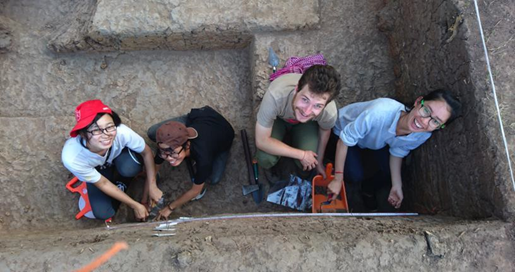
Practicing profile drawings at the KK2 Habitation/Household Site. (Credit: D. Kyle Latinis)
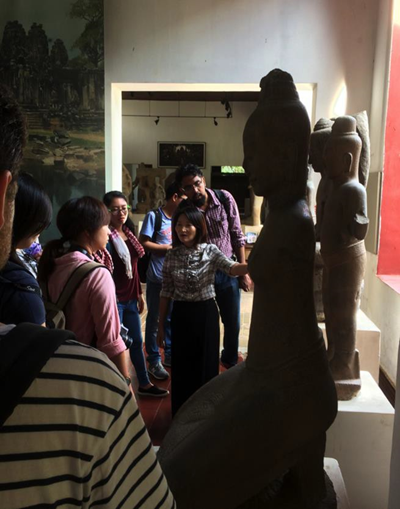
Field school participants had the opportunity to visit and learn from the National Museum of Cambodia staff in Phnom Penh. (Credit: D. Kyle Latinis)
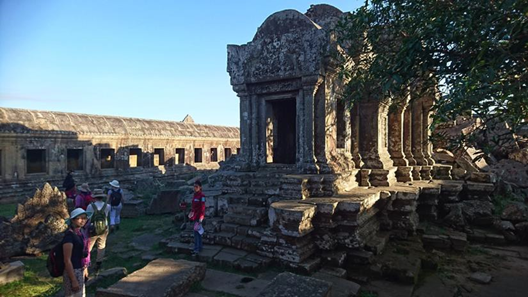
Field school participants visited Preah Vihear temple, guided by Preah Vihear authority staff. (Credit: D. Kyle Latinis)
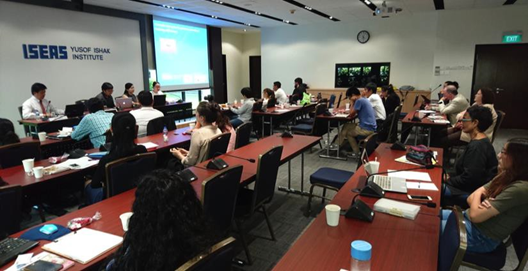
The field school activities culminated in presentations at the ISEAS – Yusof Ishak Institute, Singapore. (Credit: D. Kyle Latinis)
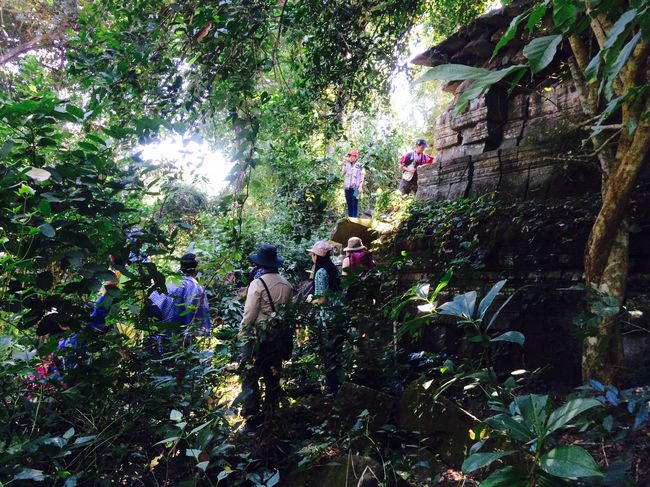
Koh Ker Field School – Torp Chey site visit, survey, and lecture (Credit: Dr. D. Kyle Latinis).
The Archaeological Unit (AU) at ISEAS – Yusof Ishak Institute (ISEAS) conducted an archaeological Field School from 2-22 December 2015 in Koh Ker, Cambodia. This was in collaboration with Cambodia’s APSARA Authority and was the third Field School conducted by AU in Cambodia.
There were a total of 12 students who participated in the Field School from a variety of East Asian countries including Cambodia; Indonesia; Laos; Vietnam; Philippines; Myanmar; Hong Kong; New Zealand; and Singapore.
The itinerary featured interactive site visits and informal on-site lectures. Hands-on training sessions took participants and staff through 2000 years of complex socio-political and economic evolution. Topics also included urbanisation, exchange dynamics, cultural influence, and multi-directional agency among pan-Asian networks. The pivotal points of analytical foci and departure spanned the famed Khmer polities of Funan (1st-6th centuries CE), Chenla (7th-8th centuries CE), and Angkor (9th-14th centuries CE).
The main event included coordinated archaeological and anthropological operations at multiple sites within the enigmatic 10th century Angkorian capital city of Koh Ker associated with the reign of Jayavarman IV. Participants lived on-site (in the forest) working with professional staff and local community members. They trained at three excavation locales to cover a diverse range of approaches, techniques and research questions. The results will provide valuable contributions to science, archaeology and history.
The final Field School leg in Singapore provided an important comparative component, added training opportunities, facilitated library access and allowed participants to finalise and present team projects.
The Field School was funded by the Ministry of Foreign Affairs, Singapore. Primary institutions included ISEAS and APSARA Authority. Supporting partners included the Ministry of Culture and Fine Arts, Cambodia; the Royal University of Fine Arts, Cambodia; The Royal Academy of Cambodia; the National Museum of Cambodia; the Hungarian Southeast Asian Research Institute; Ecole Francaise d’Extreme-Orient; and an extensive list of several other organisations and independent researchers who provided invaluable input, advice, opportunities and support.
Field School Director: Dr D. Kyle Latinis (ISEAS)
Field School Co-Director: Dr Ea Darith (APSARA Authority)
Field School Archaeologist and Operations Manager: Ms Foo Shu Tieng (ISEAS)
2015 Field School Administrative History
Announcement
Booklet (pdf, 1.23MB)
Call for applications (pdf)
Application Form (doc) (Deadline: 5PM (+8GMT), 21st Sept 2015)
Frequently Asked Questions (pdf)
Image Gallery

Archaeological Field School site visits and landscape archaeology training and historical ecology modelling at the ancient urban sites of Phnom Chisor and Angkor Borei, Cambodia. (Credit: Dr. Ea Darith)

Dr. D. Kyle Latinis (Field School Director) conducting surface survey, mapping, and landscape Archaeology training at Angkor Borei. (Credit: S. T. Foo)

Dr. Ea Darith (Field School Co-Director) discussing epigraphy and bar relief analysis at Angkor Wat. (Credit: S. T. Foo)

Art and architectural history training by Dr. Helene Njoto at Angkor Wat. (Credit: Dr. Ea Darith)

Field school students at Sambor Prei Kuk – site visit, applied research design, and site preservation training. (Credit: S. T. Foo)

Koh Ker Field School – Auger-coring and soil analysis training. (Credit: Dr. D. Kyle Latinis)

‘ASEAN-style’ group shot at Prasat Srayang, Koh Ker temple complex– site visits, survey and lectures led by the Hungarian Team. (Credit: S. T. Foo)

Excavation at Koh Ker 2 – recovering an intact early Khmer glazed jarlet. (Credit: S. T. Foo)

Mr. Aaron Kao conducting site and feature drawing training at Prasat Damrei, Koh Ker. (Credit: Dr. D. Kyle Latinis)

Local students and teachers visiting Koh Ker excavations as part of the interactive outreach initiatives. (Credit: Dr. D. Kyle Latinis)

Ethnographic and Ethnoarchaeological training with S. T. Foo at Kampong Chhnang traditional pottery making village. (Credit: Dr. D. Kyle Latinis)

Mr. Michael Ng briefing field school participants at the Archaeology Unit office, ISEAS – Yusof Ishak Institute, in Singapore (Credit: Dr. Ea Darith)

Field School students at ISEAS – Yusof Ishak institute. (Credit: Dr. Ea Darith)

Field school students giving a group presentation. (Credit: Loh Joo Yong)
General Information
The second session of the field school was held from 30th May to 17th July, 2013. The Royal Academy of Cambodia was this year’s partner institution for the Archaeological Field School. The curriculum included lectures, excavation, field trips, and laboratory training. Lectures incorporated broad topics—having to do with the historical, economic, and cultural impact of intra-Asian interactions—as well as specific instruction about the analysis and interpretation of Chinese and Southeast Asian ceramics as the most important source of data for the study of this topic. The teaching staff for the training program included prominent researchers from Cambodia, Singapore, and the United States.
In Singapore, students visited local museums and participated in a photography workshop. In Cambodia, students assisted in the excavation of an ancient kiln site at Cheung Ek, near the capital city of Phnom Penh.
Official announcement | FAQ | Information Booklet (2.66MB))
Field School of Archaeology Reading List (146kb) | Lecture Abstracts (108kb)
Participants
There were 37 applicants to this year’s field school session; 12 individuals were selected from the pool of applicants (2 from Cambodia, Indonesia, Singapore, Vietnam, and the United States; and 1 each from China and Japan). In addition, 2 Cambodian participants also attended the Cambodia segment of the field school.
Opening Sessions
The field school was officially opened by Dr. Ooi Kee Beng, the Deputy Director of the Institute of Southeast Asian Studies and Head of the Nalanda-Sriwijaya Centre on the 30th of July 2013 at Seminar Room III, in Singapore. Participants were welcomed by A/P John Miksic, the head of the Archaeology Unit.
The Cambodia segment was opened by Phon Kaseka, the head of the Archaeology department at the Royal Academy of Cambodia, on the 2nd of June, 2013.
Activities
In Singapore and Cambodia, the participants attended a series of lectures designed to provide them with a working knowledge of the background to the current state of Southeast Asian archaeology as well as on Southeast Asian pottery and kiln technology (see “Recorded Lecture: Ceramics, Technology, Trade, and Culture in Southeast Asia” by A/P Miksic). Members of the Archaeology Unit, such as Dr. John Miksic, Mr. Kwa Chong Guan, Dr. Goh Geok Yian, and Mr. Lim Chen Sian, all gave lectures.
In Cambodia, lectures were given by Mr. Phon Kaseka, Dr. Ang Choulean, Mr. Heng Piphal, Mr. Heng Sophady, and Mr. Siyonn Sophearith at the Royal Academy of Cambodia.
ISEAS Archaeology Unit (AU) staff, together with Cambodian colleagues, conducted field study trips to the National Museum of Cambodia, and to sites outside of Phnom Penh such as Udong (an ancient capital of Cambodia) and the Cheung Ek Genocide Center. The participants were also introduced to the Cheung Ek area by doing a walking survey of several ancient pottery kilns in the area, as well as a modern brick kiln.
Instructors at the Cheung Ek excavation included Dr. Chhay Rachna (APSARA Authority), Mr. Heng Piphal, Mr. Hoeung Sothearos, Dr. John Miksic, and Dr. Goh Geok Yian. The field school also provided an opportunity for the participants to understand the results of the excavation, as a public lecture was given by Mr. Phon Kaseka on the 17th of June, 2013.
Participant Presentations & Reports
The closing event of the field school consisted of 15-minute individual presentations by the students on their personal experiences, their insights about Inter-Asian Interactions gained from the field school, as well as the impact of the field school on the trajectories for their own future research and contribution to Southeast Asian archaeology and scholarship. Participants were also required to write a report on their own work performed at Cheung Ek.
Image Gallery

Overview
In 2009, the Institute of Southeast Asian Studies (Singapore) (renamed ISEAS – Yusof Ishak Institute in August 2015) established the Nalanda-Sriwijaya Centre (NSC) with the goal of reviving the ancient university of Nalanda as a center for culture and learning. The NSC conceived of an archaeological training program to support this project, which would bring ten students to Cambodia and Singapore (spending approximately two weeks in each country). The funding for the project is provided by the Singapore Ministry of Foreign Affairs. The teaching staff for the training program has included prominent researchers from Australia, Cambodia, Singapore, and the United States.
This program is meant to contribute to an increased understanding of the ancient and intimate links that have connected Asian countries, to emphasize the history of intra-Asian interactions over the past 2,000 years, and create a community of East Asia Summit (EAS) scholars. It will be through the participants that the training program will disseminate information on the Nalanda University project among the EAS countries’ citizens and governments.
Other institutions within the EAS that collaborated in this project include the Royal University of Fine Arts (RUFA), Authority for the Protection and Management of Angkor and the Region of Siem Reap (APSARA Authority), the Royal Academy of Cambodia, Sydney University, and the Australian National University.
The 18 East Asia Summit countries are: Australia, Brunei, Cambodia, China, India, Indonesia, Japan, Laos, Malaysia, Myanmar (Burma), New Zealand, the Philippines, Russia, Singapore, South Korea, Thailand, the United States, and Vietnam.
General Information
The first session of the field school, which was intially named the NSC Field School of Archaeology, was held from 9th January to 4th February, 2012. The curriculum included lectures, field trips, and laboratory training. Lectures incorporated broad topics—having to do with the historical, economic, and cultural impact of intra-Asian interactions—as well as specific instruction about the analysis and interpretation of Chinese and Southeast Asian ceramics as the most important source of data for the study of this topic. In Cambodia, students worked with Chinese and Khmer ceramics collected from recent fieldwork conducted in the Angkor area by a Cambodian-Australian team in the Robert Christie Centre, a laboratory built in Siem Reap by the University of Sydney. In Singapore, students visited local museums and helped to analyze Chinese and local ceramics excavated from 14th-century sites.
Official announcement | Information Booklet (download as PDF or read online as a flipbook)
NSC Field School of Archaeology Reading List (this was provided to participants as PDFs)
Participants
There were 57 applications to the field school; 10 individuals were selected, with 1 participant each from Cambodia, China, India, Indonesia, Myanmar, the Philippines, Russia, Singapore, Vietnam, and the United States. In addition, 4 local Cambodian participants also attended the Cambodia segment of the field school.
Opening Sessions & Visiting Dignitaries
The field school was officially opened by H.E. Khuon Khun-Neay, the Deputy Director General of APASARA Authority on the 10th of January 2012 at the Centre for Khmer Studies, in Siem Reap, Cambodia. Participants were welcomed by Dr. Michael Sullivan Director of CKS. Numerous Cambodian government officials, particularly from the fields of heritage management and archaeology, attended the opening ceremony. The wives of Singapore’s Minister of Foreign Affairs and the Ambassador to Cambodia of the Republic of Singapore also visited the workshop in the afternoon of the official opening. Dr. Miksic, a member of the board of the Center for Khmer Studies, gave the VIPs a guided tour of the Center.
The Singapore segment was opened by Ambassador Kesavapany, the Director of ISEAS, and Professor Prasenjit Duara, the Raffles Professor of Humanities, and Director at the Asia Research Institute, National University of Singapore, on the 25th of January, 2012.
Several members of the local press corps were in attendance and a resulting article on the field school was published in the Straits Times on the 30th of January, entitled “Building bridges to help dig deeper: New unit aims to bring together region’s young archaeologists.” Dou Hao / Zb Comma also released an article in Mandarin entitled “A New Experience in Archaeology, Bridging the Gaps in History.”
Activities
In Cambodia, the participants attended a series of lectures designed to provide them with a working knowledge of the background to the current state of Cambodian archaeology. These lectures were conducted by local Cambodian archaeologists: Dr. Ly Vanna, Dr. Ea Darith, Mr. Chhay Rachna, and H.E Tan Boun Suy, the Director of Angkor International Documentation for Research Centre of APSARA.
ISEAS Archaeology Unit (AU) staff, together with Cambodian colleagues, conducted field study trips to the Angkor Archaeological Park, the Preah Norodom Sihanouk Museum, and to sites outside of Angkor including Phnom Krom and Beng Melea. The participants also made a visit to the ISEAS AU sponsored excavations at Torp Chey, an 11th to 12th century kiln complex that was recently uncovered.
At the University of Sydney Robert Christie Centre, the participants spent a week learning about laboratory analysis and processing of archaeological ceramics. The students also took part in a field survey conducted by the University of Sydney’s Greater Angkor Project (GAP), and visited the future site of a major research and restoration project at the West Mebon. Instructors included Prof. Roland Fletcher, head of GAP; Dr. Martin Polkinghorne; Mr. Wayne Johnson; Dr. Dougald O’Reilly; and Ms. Linda McLaren.
In Singapore, classes were held to introduce the basics of archaeological artifact photography, artifact illustration, as well as laboratory processing of ceramic finds. Other classroom lessons include lectures on the archaeology of Singapore, inter-Asian interactions past and present, and the students were also introduced to museum management of artifacts, for which four museums and one archaeological site were visited. Prof. Kwa Chong Guan gave a lecture on museology at the NUS Museum. The field school also provided an opportunity for the participants to understand the applications of the past to today’s political agendas as the ISEAS NSC organized a large public seminar titled “An Afternoon with Zheng He” involving the participants; over a hundred people attended the seminar as the subject matter was quite popular. The documentary “Junk History” was screened, followed by a lively discussion between the organizers, audience and the field school participants.
Participant Presentations & Reports
The closing event of the field school consisted of 15-minute individual presentations by the students on their personal experiences, their insights about Inter-Asian Interactions gained from the field school, as well as the impact of the field school on the trajectories for their own future research and contribution to Southeast Asian archaeology and scholarship. Each participant submitted two separate written papers on interactions within Asia, based on their experiences in Cambodia and Singapore, as reflected in history and archaeology.
Image Gallery



